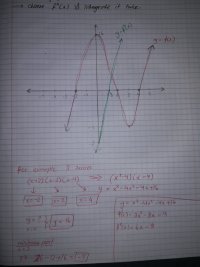It is not as easy as just having the 2nd derivative equaling zero.
Consider the function f(x) = x^3. Then f"(x) = 6x which equals 0 when x=0. There is a point of inflection at x=0.
Now consider the function f(x) =x^4. Then f"(x) = 12x^2 which equals 0 when x=0. However, there is no point of inflection at x=0.
Draw those two functions to see for yourself!!
Conclusion, just because f"(x)=0 for some x-values does not guarantee that there is a POI at that x-value.
Now the obvious question to ask is, if f"(x) = 0 for some x-value, then how do we tell that there is a POI at this x-value.
The answer is simple. If f"(x=c) = 0 and f(c) has a sign change around x=c, then f(x) has a point of inflection at x=c. Otherwise it does not have a POI at x=c.
In the example above where f(x) = x^3 we did have a sign change at x=0 in the 2nd derivative. f"(x) = 6x. If x<0, f"(x) < 0 and if x>0, then f"(x)>0. There is a sign change for the 2nd derivative at x=0, so there is a POI at x=0.
This is different for f(x)=x^4. Yes, f"(0) =0 but there's no POI at x=0. Why?? f"(x) = 12x^2. If x<0 or x>0, f"(x)>0. That is there was no sign change at x=0 for the 2nd derivative, meaning that there is no POI at x=0 (even though f"(x)=0 when x=0).

